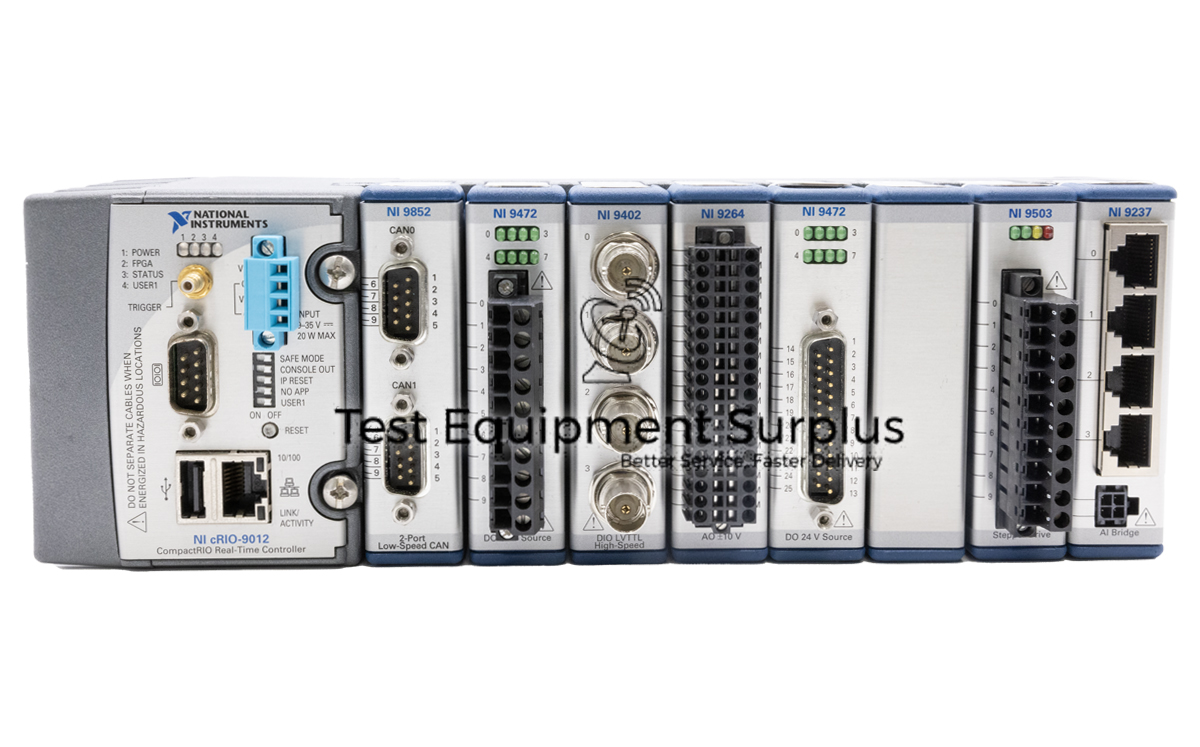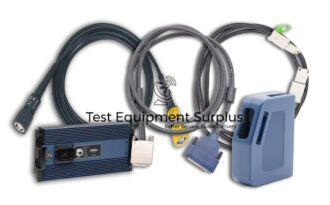Description
The National Instruments cRIO-9118 CompactRIO Chassis is a robust platform with Part Numbers 780920-01 and 780920-02, designed to be programmed using the LabVIEW FPGA interface. When configuring the AI module, users should employ the LabVIEW FPGA Interface mode for optimal integration, while alternate modules can be utilized in the Scan Interface mode for increased flexibility.
Status indicators on the cRIO-9118 are presented as logic side indicators, which are implemented with LEDs to convey the operational status of I/O points in relation to the central processing unit. These indicators are crucial for diagnosing the functionality of both input and output modules.
The NI Scan Engine is a key feature of the cRIO-9118, enabling efficient single-point access to various data channels, significantly simplifying the process of data acquisition. The scan period is an inclusive measure that accounts for both the duration of the scan process and the time required for the application logic to execute.
Performance of the cRIO-9118 is influenced by hardware and software factors, such as the I/O Scan Thread, which is affected by the type and number of C Series Modules used, whether timestamps are required, among other hardware considerations. In contrast, the I/O Variable Node is determined by software elements, including the number of nodes in a LabVIEW VI and how these nodes are accessed within the application.
| Specification | Detail |
|---|---|
| Product Name | National Instruments cRIO-9118 CompactRIO Chassis |
| Part Numbers | 780920-01, 780920-02 |
| Programming Interface | LabVIEW FPGA |
| Mode for AI Module | LabVIEW FPGA Interface mode |
| Alternate Module Mode | Scan Interface mode |
| Status Indicators | Logic side indicators (LEDs) |
| NI Scan Engine | Enables efficient single-point access to data channels |
| Scan Period | Includes time for scan and application logic |
| I/O Scan Thread | Dependent on hardware resources, module types, timestamps, etc. |
| I/O Variable Node | Dependent on software resources, number of nodes, access methods, etc. |
Question 1: What are the two part numbers associated with the National Instruments cRIO-9118 CompactRIO Chassis, and what programming interface is recommended for AI module configuration?
Answer 1: The two part numbers associated with the National Instruments cRIO-9118 CompactRIO Chassis are 780920-01 and 780920-02, and the recommended programming interface for AI module configuration is the LabVIEW FPGA Interface mode.
Question 2: How does the use of LabVIEW FPGA Interface mode benefit users when configuring the AI module on the National Instruments cRIO-9118 CompactRIO Chassis, and what role do the logic side indicators play in diagnosing functionality?
Answer 2: The performance of the National Instruments cRIO-9118 CompactRIO Chassis is affected by hardware factors such as the I/O Scan Thread, which can vary depending on the type and number of C Series Modules used and the need for timestamps, while software factors, like the I/O Variable Node, are influenced by the number of nodes in a LabVIEW VI and the manner in which they are accessed within the application, potentially impacting the efficiency and speed of the system’s data processing and response times
Question 3: What steps should a user take to properly configure the AI module on the National Instruments cRIO-9118 chassis using the LabVIEW FPGA Interface mode for optimal integration?
Answer 3: The LabVIEW FPGA Interface mode benefits users configuring the AI module on the National Instruments cRIO-9118 CompactRIO Chassis by enabling optimal integration of the module, ensuring precise control and customization, while the logic side indicators, implemented with LEDs, play a critical role in diagnosing functionality by providing real-time visual feedback on the operational status of the I/O points in relation to the CPU, aiding in the quick identification of issues with input and output modules.
Question 4: What should users employ when configuring the AI module on the National Instruments cRIO-9118 CompactRIO Chassis for optimal integration, and which mode should be used for alternate modules to increase flexibility?
Answer 4: To properly configure the AI module on the National Instruments cRIO-9118 chassis using the LabVIEW FPGA Interface mode for optimal integration, a user should first install the necessary LabVIEW FPGA software and drivers, then open the LabVIEW project that corresponds to the cRIO system. Next, the user should insert the AI module into the appropriate slot of the cRIO-9118 chassis as per the hardware documentation, and in the LabVIEW project, configure the AI module’s properties to use
Question 5: How do the hardware and software factors, like the I/O Scan Thread and I/O Variable Node, affect the performance of the National Instruments cRIO-9118 CompactRIO Chassis?
Answer 5: When configuring the AI module on the National Instruments cRIO-9118 CompactRIO Chassis for optimal integration, users should employ the LabVIEW FPGA Interface mode, and for increased flexibility with alternate modules, the Scan Interface mode should be used.



